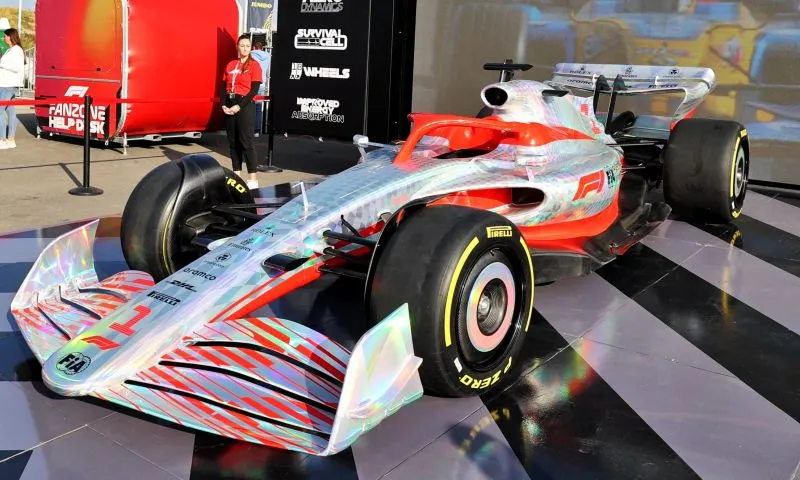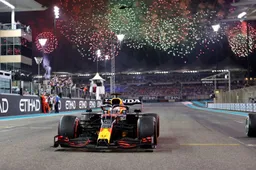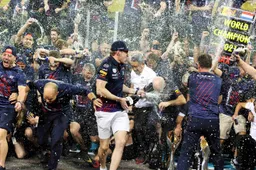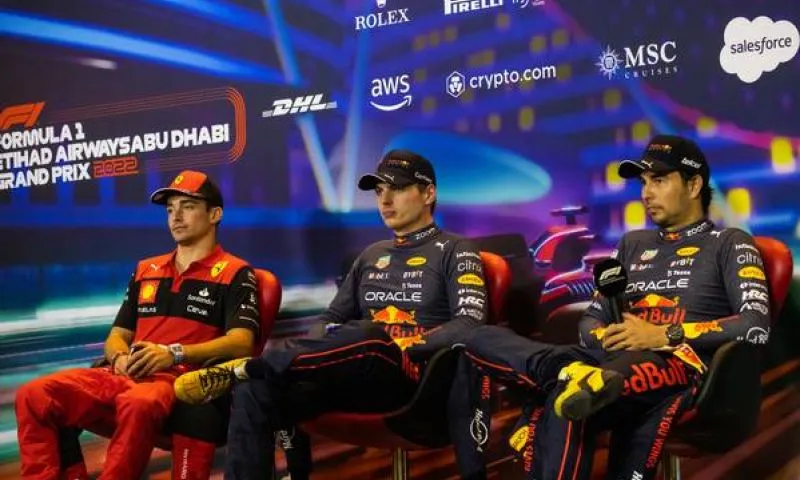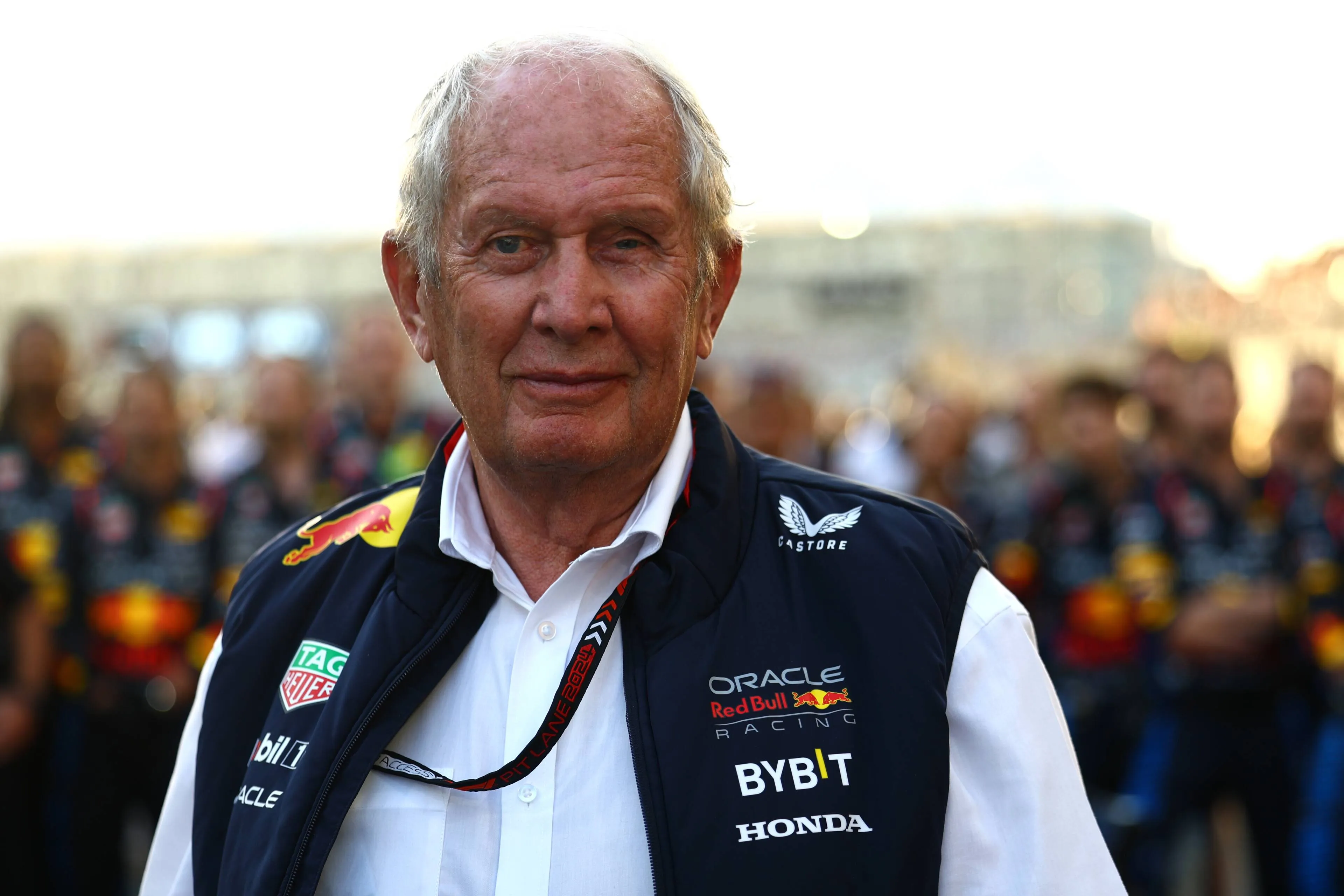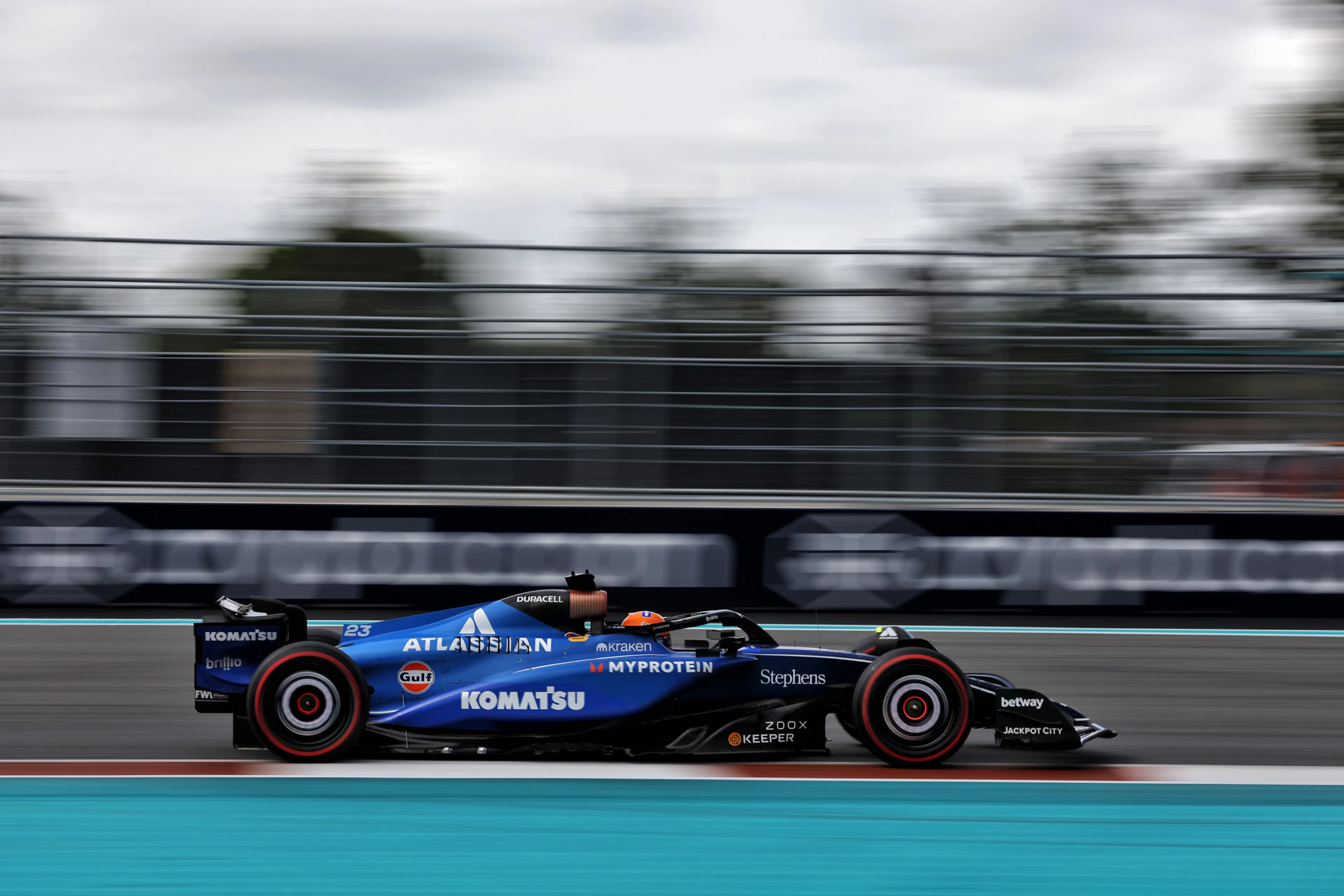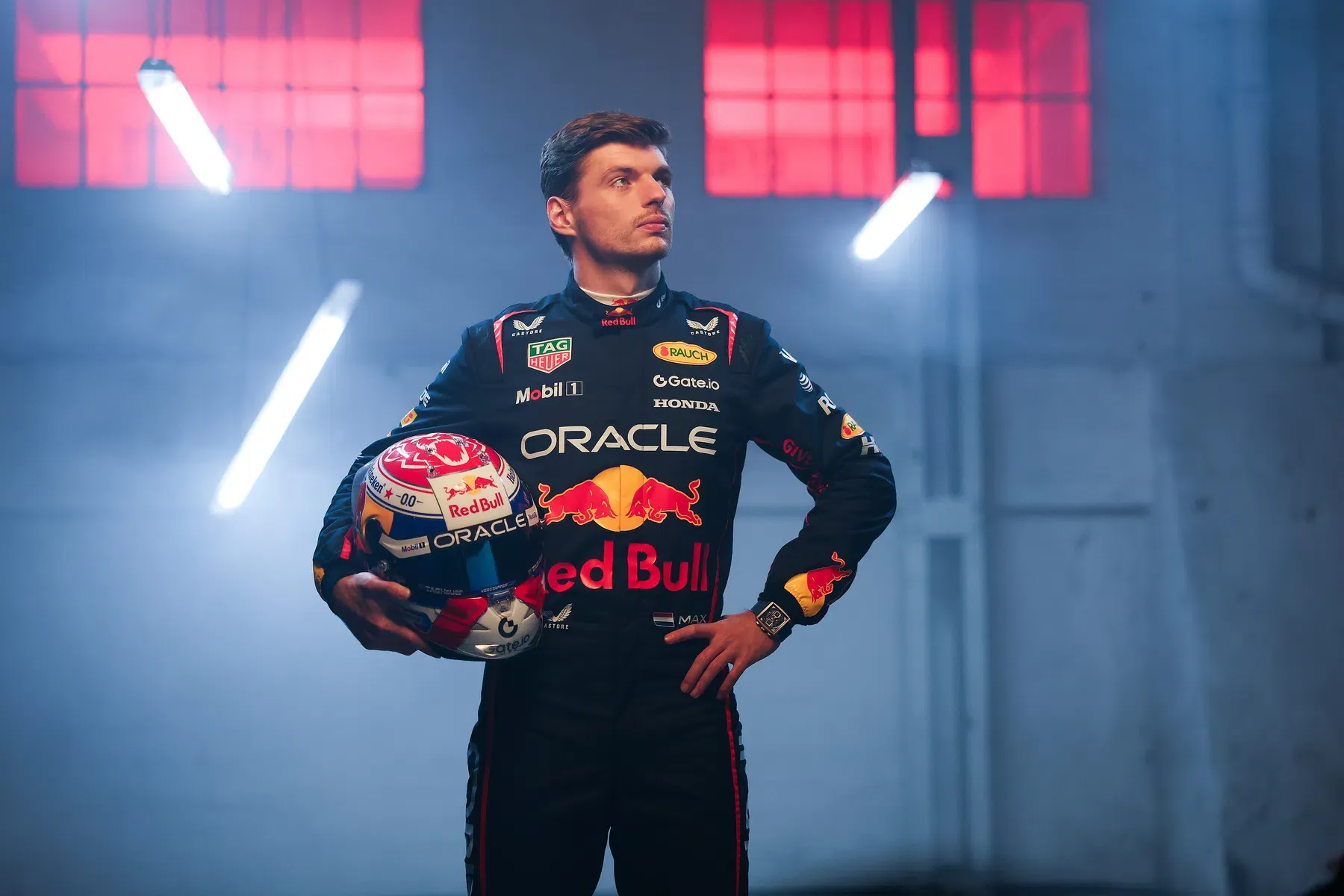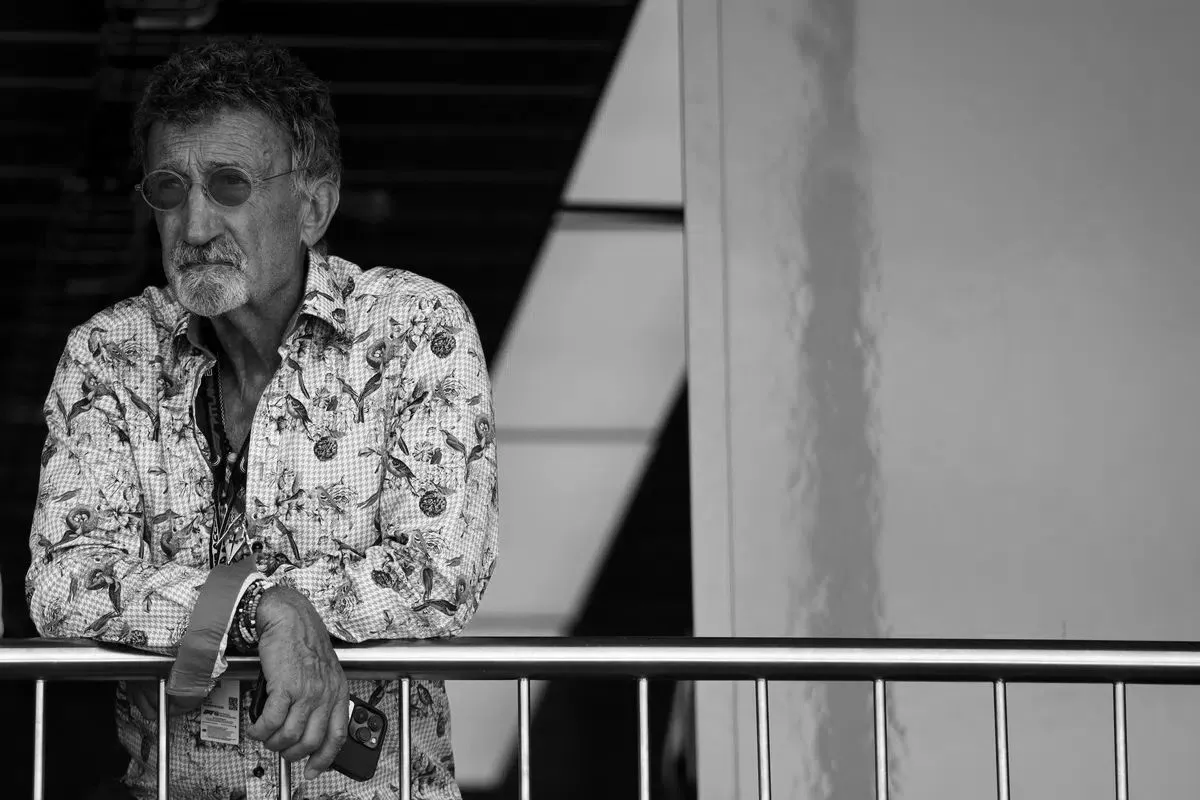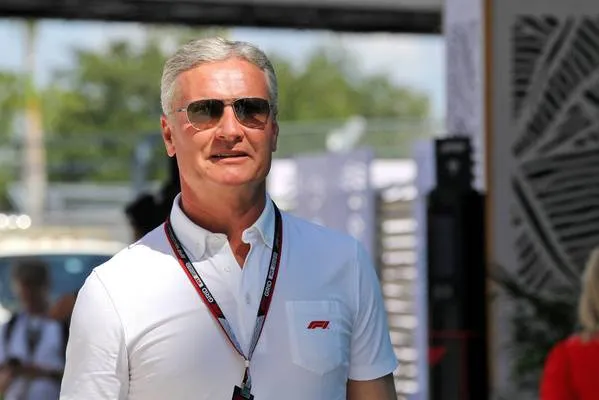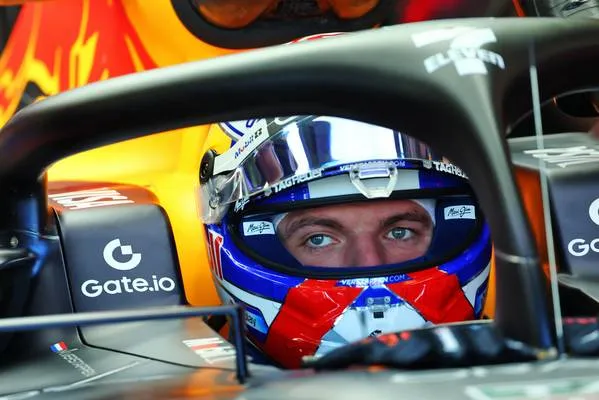It's 2022 and so it's time to look ahead to the new Formula 1 season. With new aerodynamic regulations, a lot is going to change in F1 and after a first-world title, things might look very different for Max Verstappen. Read all you need to know about Formula 1 in 2022 here.
New regulations
They have been planned for a long time, but in 2022 we will finally see the new plans of Ross Brawn and his team in action. Since the takeover of Liberty Media, this is the biggest opportunity for the new owners to leave their mark on Formula 1. With these new regulations F1 will enter a new era.
Liberty Media has been saying it from day one: Formula 1 should be simpler and there should be more overtaking. The rules for 2022 are central to the ideals of the new leadership. The cars will be much simpler, giving the designers and engineers of the teams much less room for manoeuvre.
The most striking feature of the new cars will be the front and rear wings. The front wing will be a much simpler model, and teams will no longer be allowed to place all sorts of flaps on the wing. However, the start of the F1 season will show how watertight these new regulations are.

The same goes for the rear wing. Based on the F1 model it will be more of a unit than a separate wing. The extra flaps will also be missing here. The lack of all these aerodynamic tricks should make the air behind a car much 'cleaner' now. The dirty air behind F1 cars was so great in recent years that it was hardly possible to follow another car without smoking your tyres.

The plans of Liberty Media
In 2022 that should be a lot easier, but that's all in theory. In addition to the wings, the teams have a number of boxes within which they are allowed to work on the car. Under the leadership of Brawn and Pat Symonds, clear blocks have been marked within which work can be done, so extreme extremes should be ruled out. With Symonds and Brawn F1 had a lot of knowledge this time and it will be interesting to see if any team can come up with a golden egg.
The downforce that is lost with the loss of flaps all over the car, must partly be regained with a recurring phenomenon: Ground effect. In the 70's and 80's there were several teams who could suck their car to the ground because of this effect. By creating an 'air tunnel' under the car with bottom plates that folded inwards on the outside, the cars were sucked to the asphalt. From 1983 a completely flat bottom became a requirement due to an increase in the number of accidents.
This phenomenon will return in 2022, although we will not see teams with a floor plate that completely closes off the side of the car. However, we will see 'tunnels' under the floor in 2022, making the floor of the car an essential part of the aerodynamics, where we will also see many updates.
Frozen engine developments
Honda will no longer be in Formula 1 in 2022, but will still help Red Bull Racing produce the engine. Development will no longer be necessary from 2022 onwards, as each engine manufacturer will deliver one engine at the start of 2022, which may no longer be developed through to 2025. This was originally planned for 2023, but with Honda leaving Red Bull got the other teams to move it up a year.
This means that manufacturers have to be careful with their last engine. Taking too much risk now could be a good thing for the next few years, but if the engine isn't reliable you'll be stuck with it until 2025. Honda introduced the '2022 engine' early 2021, but will still come up with a final update to put Red Bull in the best possible position.
A new test for Pirelli
In recent years Pirelli has frequently come under pressure to supply tyres to Formula 1. In 2021 we again saw a number of blowouts without any indication that they would give up the ghost. In 2022 Pirelli hopes to solve that with new tyres.
From 2022 onwards the Formula 1 cars will drive with 18-inch tyres from Pirelli. The new tyres have larger rims but have a thinner surface. These tyres were already tested in Formula 2 and by several Formula 1 teams. Pirelli's tyres have been playing a major role in performance for years and this will not change in 2022. Whoever can best handle these new tyres is also likely to be very high up in the rankings.
Adjustments to the sporting regulations
Besides the package of new regulations for the design of the car, there are also some changes to the sporting regulations. There is a limit on the number of runs you can do in the wind tunnel. In 2021 this was also the case and the limit was 40 runs per week. However, this is not the same for every team.
Mercedes will only be allowed to use 70 percent of this total because it finished first in the constructors' standings. This is a big drop from 2021 when the number one constructor was still allowed to use 90 percent of the 40 runs. That was Red Bull Racing's last six months, as the Austrians were in first place among the constructors at the halfway point of the season (June 30, 2021). Mercedes was second at the time, so from January 1, it goes from 92.5 per cent (37 runs) down to 70 per cent (28 runs).
The scale, unlike 2021 when it rose 2.5 percent per spot, rises 5 percent per spot from 2022. This means Red Bull can run two more runs per week than Mercedes. For Haas who finished last among the constructors in 2021, it's all the fun. They are allowed to use 115 percent, giving them 46 runs per week.
The budget cap would drop from $145 million to $140 in 2022, but little is clear on that yet. Indeed, with six instead of three sprint races in 2022, the top teams want a higher budget cap. There was talk of an increase of about $2.5 million, which would bring the new budget cap to $142.5 million.
The 2022 Formula 1 grid: all eyes on Red Bull and Mercedes
With the 2022 Formula One season approaching, there are not only changes in the rulebook to consider but also on the grid. It's still unclear what the new season will be like, but Red Bull Racing and Mercedes are the front runners.
Will Red Bull once again be able to build a car that can challenge the dominant Mercedes? Will Mercedes again be the benchmark? And how is George Russell developing in the company of seven-time world champion Lewis Hamilton?
New challenge for Hamilton at Mercedes
Perhaps the most dramatic shift on the grid is taking place at Mercedes. After much speculation the German team finally made its decision last summer: Valtteri Bottas has to make way for the young talent Russell. Hamilton will presumably have a more ambitious teammate than he has had in recent years, and the question is what effect this will have on the team's overall performance.
There is also some uncertainty surrounding Hamilton himself. His prolonged media silence after the defeat in Abu Dhabi has fuelled rumours that he is no longer interested in the sport and will hang up his helmet. However, he still has a two-year contract, so in principle, Hamilton is expected back on the grid in 2022.
New and departing drivers
Guanyu Zhou will be the only rookie to enter the premier class of motorsport in 2022. He will join the Alfa Romeo team, where Antonio Giovinazzi has to make way for the Chinese talent. Alfa Romeo has a complete changing of the guard as the veteran Kimi Raikkonen leaves the team. The Iceman will enjoy his well-deserved retirement and will be succeeded by Bottas.
Return of Albon
For Alexander Albon, 2022 will be an important year as it marks his comeback in Formula 1. He succeeds the outgoing Russell at Williams and has therefore said goodbye to Red Bull Racing, to which he has been loyal for a long time.
For the rest, there are few changes on the grid. For most teams, the line-up remains the same. Red Bull Racing has decided to extend the stay of Sergio Perez for example. The hope is that he can continue the upward trend that he showed in the final race in Abu Dhabi, where he proved himself immortal in defence.
| Team | Driver 1 | Driver 2 |
| Mercedes | Lewis Hamilton | George Russell |
| Red Bull Racing | Max Verstappen | Sergio Perez |
| Ferrari | Charles Leclerc | Carlos Sainz |
| McLaren | Lando Norris | Daniel Ricciardo |
| Alpine | Fernando Alonso | Esteban Ocon |
| AlphaTauri | Pierre Gasly | Yuki Tsunoda |
| Aston Martin | Sebastian Vettel | Lance Stroll |
| Williams | Alexander Albon | Nicholas Latifi |
| Alfa Romeo | Valtteri Bottas | Guanyu Zhou |
| Haas | Mick Schumacher | Nikita Mazepin |
Formula 1 calendar of 2022
In 2022, Formula 1 will have the longest calendar ever with 23 races in total. The season starts in March and this time will not end in December, but already in November. This is due to the World Cup which will take place in Qatar in December 2022. Besides the normal races, there will also be six sprint races in 2022, but nothing is known about the locations yet.
The season will kick off in Bahrain, followed by the Saudi Arabian Grand Prix. The circuit caused a chaotic race last season and will remain on the calendar at least until 2030. The Qatar Grand Prix will be missed because the country is hosting the World Cup. From 2023 F1 will travel to Qatar again.
There is one new addition to the calendar, namely the Miami Grand Prix. This will take place early in the season. Because of this, the American Grand Prix will be held twice as the race on the circuit in Austin remains on the calendar. Furthermore, we cannot forget the Dutch Grand Prix. After a successful edition in 2021 Zandvoort is back on the calendar. The race takes place in September like last year and is part of a triple-header with the Belgian Grand Prix and the Italian Grand Prix.
Full F1 calendar 2022
Grand Prix of Bahrain - 20 March
Saudi Arabia Grand Prix - 27 March
Australian Grand Prix - 10 April
Italian Grand Prix - 24 April
American Grand Prix (Miami) - 8 May
Spanish Grand Prix - 22nd of May
Monaco Grand Prix - 29 May
Grand Prix of Azerbaijan - 12 June
Grand Prix of Canada - 19 June
Grand Prix of Great Britain - 3 July
Grand Prix of Austria - 10 July
French Grand Prix - 24 July
Grand Prix of Hungary - 31 July
Grand Prix of Belgium - 28 August
Grand Prix of The Netherlands - fourth of September
Grand Prix of Italy - 11 September
Grand Prix of Russia - 25th of September
Grand Prix of Singapore - 2 October
Grand Prix of Japan - 9 October
American Grand Prix (Austin) - 23 October
Grand Prix of Mexico - 30 October
Grand Prix of Brazil - 13 November
Abu Dhabi Grand Prix - 20 November
Car launch and winter testing
Before testing starts, the teams will present their new cars. The launches usually take place in February. Ferrari has already announced that they will launch their car between 16 and 18 February. The announcement of the other teams will follow soon, but most of the launches are expected to take place in February, just before the official test weeks. A few teams may already choose to show their car at the end of January.
Before the start of the season, there will be two weeks where the teams can test their cars. This time it is even more important because of the new regulations that come into effect this season. The first week the testing takes place at the Barcelona circuit as we are used to from previous years. The second week the F1 circus moves to Bahrain. All action during that week will be broadcasted on F1TV and Viaplay has also indicated that they will be present during the second week of testing. The first week takes place behind closed doors.
Test days 2022
Barcelona 23 - 25 February
Bahrain 11 - 13 March
Written in collaboration with Femke Notermans and Nicole Mulder
Read more about:
Popular on GPBlog

1
Several drivers to the stewards after F1 Sprint in Miami
2029 times read
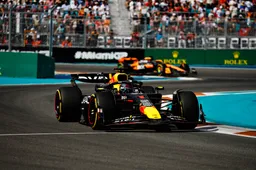
2
Miami Grand Prix weather: It is raining now, what's the forecast for the Sprint?
1329 times read
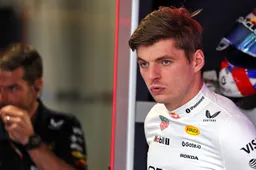
3
Verstappen critical after after unsafe release incident: 'Very sloppy'
930 times read
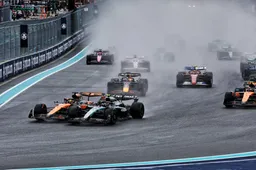
4
Max Verstappen penalised for incident with Antonelli
899 times read
